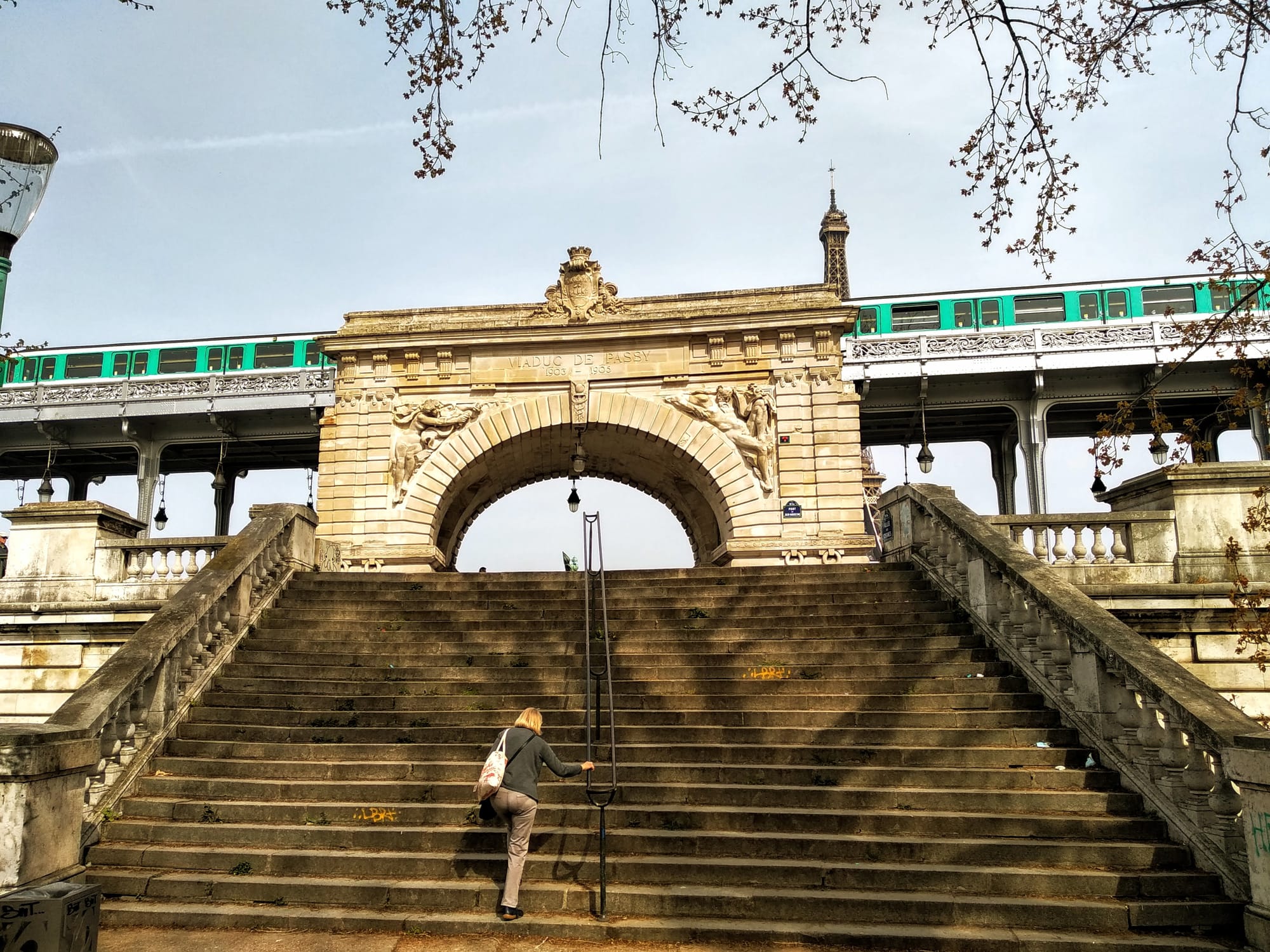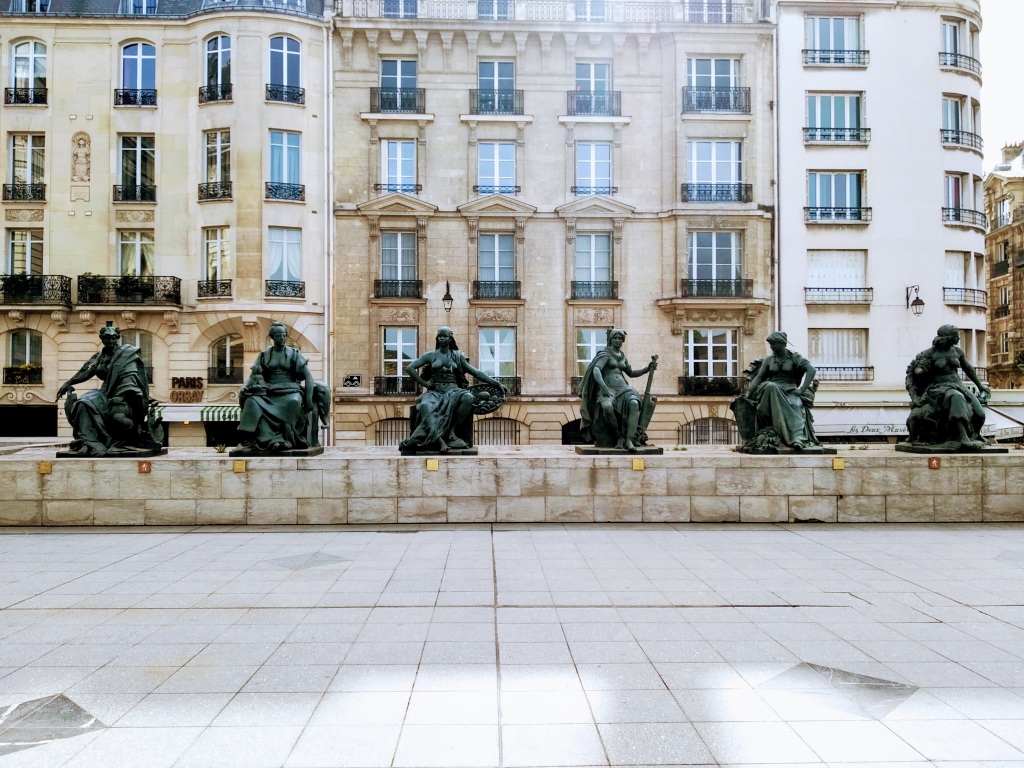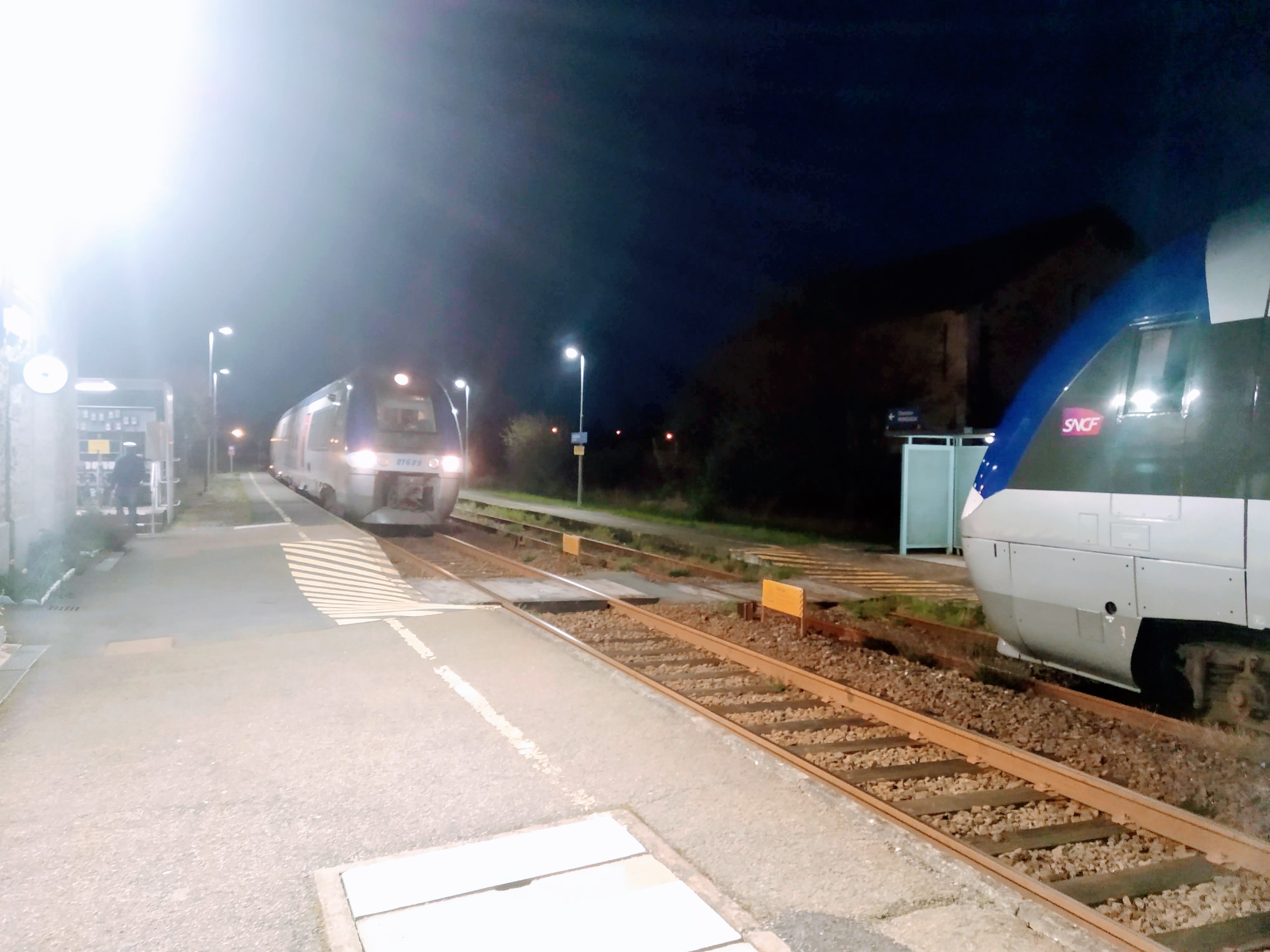Paris in a day
Une poupée à Paris

That's quite a bold claim – and there's so much more I could've done. But I didn't.
When (normal) people talk about train travel, especially when it's in the dark, they talk of some kind of magical hypnotic effect of orange neon lights sliding past the window combined with the soporific rocking motion of the train transporting you to a dreamy, care-free slumber, so that you to wake up at your destination refreshed and ready to seize the day. There's probably an accompanying photograph full of bokeh, almost certainly of someone gazing wistfully out of a window.

I was quite looking forward to some of that when I boarded the 05:09 TER from La Coquille, but whatever the effect was that I experienced, it was the complete anithesis of soporific-snoozy. After getting up at 3am after a disappointing night's non-sleep, I found myself bolt upright practically licking the windows with excitement all the way to Limoges – despite its being pitch black outside and there being literally nothing to see.
Nothing.
There was a little spare time between trains in Limoges for a quick wander to the shop to buy some sweets for the journey, and to take in the glory that is an early-morning Limoges Benedictins with not-too-many people in it. As a result of work going on the bar is closed, but I was contented by my purchase of a packet of Fisherman's Friends as I got the 06:05 Intercités to Paris Austerlitz.
I managed to doze a little early on in the journey – until the coffee machine was fixed, from which point my fate was sealed. In any case, any attempts at sleeping were interrupted at each stop by pangs of fear at occupying a seat I hadn't reserved. By Vierzon it became clear that nobody had booked it and I was able to relax a little and close my eyes; there was nothing to look at given the window somewhat implicit in the booking option "window seat" was conspicuous by its absence.
The reason for my day-trip to Paris was an incredibly short administrative meeting in the eighth. At the time I booked it I didn't know I'd be in and out in less than ten minutes so had left myself plenty of time during planning between my train's 9:21 arrival at Austerlitz and my 11:00 appointment at the rue de La Baume. There were 30 minutes to accommodate potential SNCF tardiness, 30 minutes to get to the closest métro to my appointment, and then 30 minutes more to have breakfast on the pavement outside a café somewhere, glamorously breathing in exhaust fumes.
Typically, the train only arrived a few minutes late so I had plenty of time to spare and decided I would walk the six kilometres (!) along the Seine instead which my phone reliably informed me would only take an hour and fifteen minutes. What was once the expressway along the left bank of the Seine (left bank because it flows to the west) has been pedestrianised since I lived and worked in Paris so this is an appealing prospect.
The first point of call straight out of the station was Tino Rossi Garden, a green space along the left bank with trees, plants, sculptures, and fitness equipment. With more time, I'd have crossed the road to explore the Jardin des Plantes, but I was in a bit of a hurry. So too were the angry cyclists and people on near-silent scooters because although the cars have gone, the inate sense of priority not-only-from-the-right of anyone possessing at least one wheel in Paris has not.
Nonetheless, this in no way detracted from the delicate odour of sewage or occasional piles of rusting bikes previously dredged along my riverside stroll to the Île de la Cité. As I approached Notre Dame from the east, it became clear that she looks a lot more healthy than when I last saw her on the news, and is a hive of restoration activity.

By the time I'd crossed the Pont des Arts and got to the Louvre it was becoming clear that Google Maps had woefully understimated my capacity for dawdling and as a matter of urgency it was decided it would be safer for me to jump into a taxi than risk being late for my appointment. Sadly there are consequently no photographs of a finger puppet in front of pyramids or getting lost in the Jardin des Tuileries.
Two fingerprints from a no-nonsense Baltic woman and a coffee on the Boulevard Haussmann later, it was time to do some "tourism" to fill the hours until my train home.
As it is "just up the road", and because I fancied looking for a Moonswatch on the Champs Elysées, I took a leisurely walk to the Place de l'Étoile and took a photo of its imposing monument. I used to drive – or be driven – round this on a near-daily basis when I was living in Paris and it's as chaotic on foot as it is in a car with roughly the same odds of a gruesome end, although if you want to access the arch you can do so via tunnels. You do not have to cross the road, people.
The arch is in the centre of an enormous roundabout fed by twelve radiating avenues, all of them introducing angry late-for-something Parisians to each other in a manner that requires those already on the roundabout to stop for people joining it; la priorité à droite. The trick in a car, I was taught by a hardened Parisian, is simply "do not let zem smell your fear."
Essentially, this demands that you not acknowledge the presence of any other road users as you drive onto the roundabout as they will stop for you if you force them to by not making eye-contact. Emerging on the other side requires deft lane-splitting between the cars now joining from your right, as they will not stop because they're honing the same tactic.
Imagine an angry waiter has emptied an entire plate of spaghetti onto your bistro table in a fit of je m'en foutisme. Now:
- choose the piece of spaghetti that most nearly gets you from where you are to the other side of the table;
- do not make eye contact;
- follow it, all the while angrily thumping in vain the button on the steering wheel that should by all logic magic away other road users;
- do not make eye contact;
- emerge victorious!

From there, it's a twenty-minute walk to the Pont d'Alma which commemorates the battle of Alma, and not the death of a princess.
The Flamme de la Liberté is a full size replica covered in gold leaf of the flame held aloft by Libertas in her efforts to illuminate the world. At the bottom of the flame people still place flowers for Diana and some blue and yellow has also recently found its way into the mix. A man came to share with me his factually questionable condolences.
I was somewhat under-prepared for lunch, which consisted of an apple and a bottle of water on the side of the river between the Tour Eiffel and Trocadero. Before it was transported to Belfast, the SS Nomadic – tender to the Titanic and in the nineties and noughties the last of the White Star Line fleet still afloat – was moored here as a restaurant.
Twenty-or-so minutes later I'd walked far enough along the river to find myself in front of the Maison de la Radio, home to Radio France. It's big and round and right next the Pont de Grenelle, which has stairs to the end of the Île aux Cygnes. Here can be found one of France's many replicas of the Statue of Liberty.

La Liberté éclairant le monde was a gift to the United States from the people of France. It was designed by Frédéric Auguste Bartholdi and its copper cladding is held together by internal scaffolding made by Gustav Eiffel.
This replica is a gift from the United States to the people of France and is the largest of the half-dozen or so that are to be found hidden around the capital, although to be fair, being the largest, this one is hardly hidden. It is in the middle of a large artificial island in the middle of a busy river. It's quite visible.
I needed a little rest at this point (quite a lot of walking) so sat on Liberty's pedestal long enough to revitalise myself by sucking on a Fisherman's Friend. It was time to start making my way back to Austerlitz.

The island links two bridges, so I walked back along the Allée des Cygnes and climbed the stairs to the Pont de Bir-Hakeim. As you climb the stairs, you first see the two-tier bridge that allows both pedestrians and the métro to cross the river with the Eiffel Tower heaving into view behind it, and then the majestic bronze arse of a horse, La France Renaissante, just as you reach the top.
I was running short of time at this point so took the RER C at the Champ de Mars to the Musée d'Orsay, thinking I might get to have a quick look inside. It turns out it's closed on Mondays, so all I got to see as I got off the RER were the lines and platforms that now transport the SNCF's suburban services.
Before it was converted into a museum in the eighties, the Gare d'Orsay was the terminus of the Paris-Orléans railway and is, like most French railway stations from its time, somewhat grand. The upper part of the old station hall is now the main exhibition space of the Musée d'Orsay which I would really have liked to see, but it was not to be. I was only able to see building from the outside.
The façade of the station building has two massive clocks and between them are written the names of all the destinations once served by the station. There are PO isignia across the front of the station to remind you of the connection between Paris and Orléans. On the parvis outside the entrance to the RER sit six statues that represent the six continents, all of whom – apart from Europe – defiantly sunbathe topless all year round.

Time becoming more of an issue, a few stops on the RER later I was back at Austerlitz, ready to go home.
By the late thirties it had become apparent that the Gare d'Orsay was no longer suitable for mainline rail traffic. When the decision was taken in 1939 to stop trains serving, the Gare d'Austerlitz – another station of the Compagnie des Chemins de fer d'Orléans – took over. It's currently undergoing a lot of work to make it bigger and again there's not really much to see (not that there really was anyway) apart from scaffolding and cones.
I used to commute from here weekly and still regret having never been in enough time to eat in the restaurant which was demolished in the early teens to make way for more taxis. You can now get a cup of "coffee" from a machine or an overpriced sandwich from a newsagent instead, such is progress. It does have a proper waiting room, though.
The 16:28 Intercités left on time and had a nice lady with a trolley who brought food and drink to my seat, and this time it was my seat. Some more snoozing was attempted but was mostly fruitless, despite a cunning plan involving beer.
I enjoyed being able to take my boots off and sit back.

By the time I connected to La Coquille it was getting dark again and I arrived much as I had left, gazing into the dark. There was much excitement on arrival as the train from Périgueux pulled in at the same time we did, so there were two whole trains in the station at once. Both stopped either side of the walkway across the tracks to let a passenger (me) cross, but I felt reckless crossing in front of them both. Perhaps my life really is that boring.
I'm sure that had I planned my day better, I could have looked at more more things touristy or made use of the metro to do more than, essentially, walk up and down a river. In retrospect, I should have taken or bought a proper lunch to eat in a park or on the side of the river somewhere, but lack of planning last night caused by some pub action ensured that didn't happen.
I need new feet.
